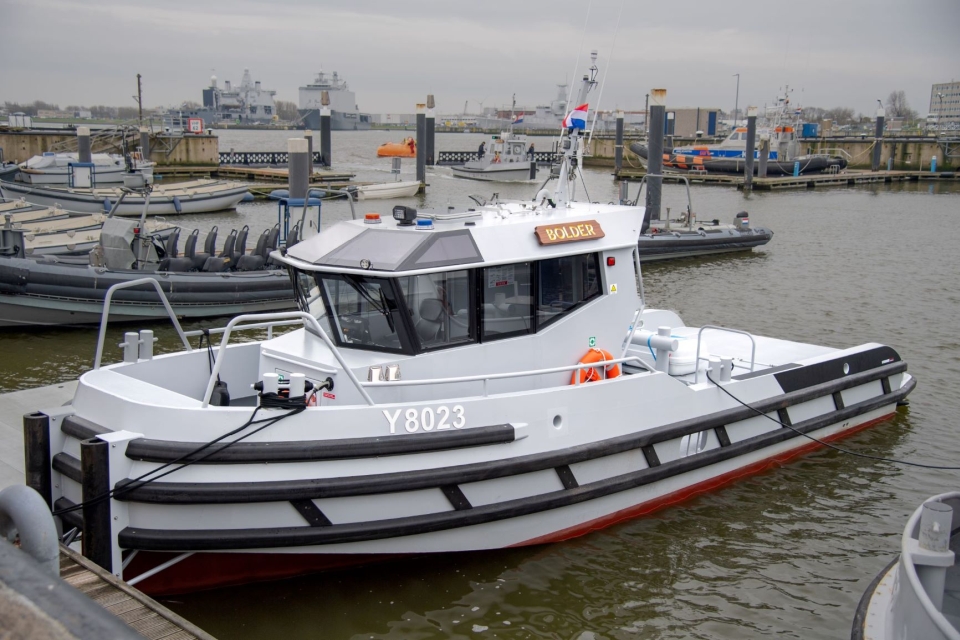The Royal Netherlands Navy can take the first electric workboat into service. At the Nieuwe Haven in Den Helder, Bolder was christened on 22 November. It is the first of three new ones. They will all be fully electrically propelled.
The trio replaces the five small tugs of the Schelde class. The other two boats (Beting and Bakspier) are expected to be ready for use next year. Until then, the current workboats will continue to sail. They have now completed some 35 years of service.
Also read: Dutch navy vessel uses shore power during maintenance
Workhorses
Within the navy, the towing service uses workboats. These “workhorses” are used for numerous tasks. For instance, they assist in unloading and unmooring and moving small boats and pontoons to another berth. They also transport personnel through the port.
For the new vessels, Defence joined forces with builder Stormer Marine BV from Hoorn. The vessels are expected to require relatively little maintenance. The battery, for instance, will basically last the boat’s entire lifespan.
Also read: SWZ|Maritime’s May 2023 navy special: New fleet for the Royal Netherlands Navy
Electric propulsion
The new workboats have a range of 80 kilometres at a speed of 4 knots. On board, in addition to the two-headed crew, up to eight boarders can be taken along. The crew has already gained tentative experience with the new equipment a week before the commissioning. For instance, they went through a short training programme at the supplier.
Developments in electric propulsion for ships are moving fast. Defence opted to switch to fully electrically propelled workboats as early as 2020. This is a consequence of the Defensie Energie en Omgeving Strategie (Defence Energy and Environment Strategy) and the Plan van Aanpak Energie Transitie Defensie (Defence Energy Transition Plan of Approach). The aim is to reduce the use of fossil fuels.
Picture by the Dutch Ministry of Defence.
Also read: IHC to maintain three Dutch navy vessels








